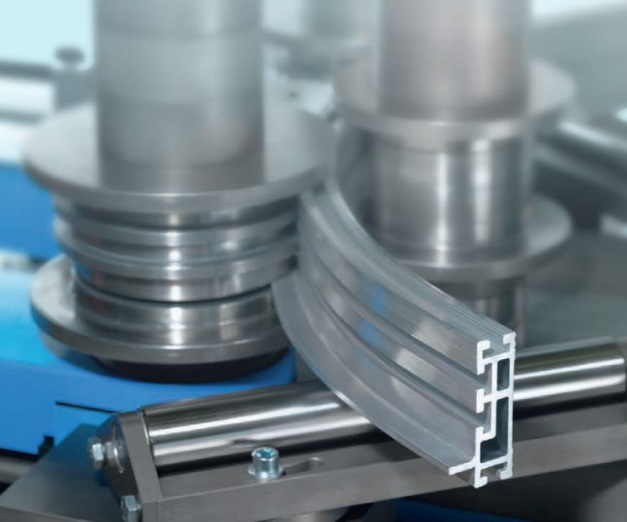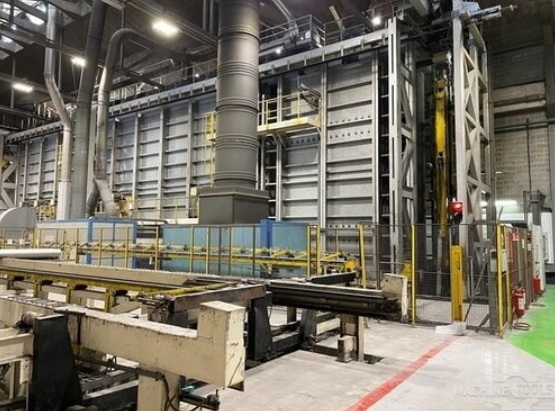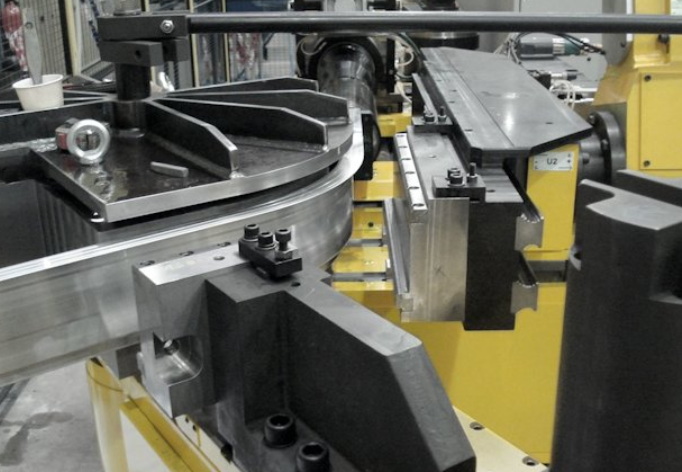Content Menu
● Introduction to Extrusion Auxiliary Equipment
>> Upstream Auxiliary Equipment
● Downstream Auxiliary Equipment
>> Cooling Equipment
● Importance of Extrusion Auxiliary Equipment
● Types of Extrusion Auxiliary Equipment
>> 1. Pay-off Equipment
>> 2. Straightening Equipment
>> 3. Preheating Equipment
>> 4. Cooling Equipment
>> 5. Traction Equipment
>> 6. Meter Counter
>> 7. Spark Testing Machine
>> 8. Take-up Equipment
● Case Study: Conair Group's Approach to Extrusion Auxiliary Equipment
● Advanced Technologies in Extrusion Auxiliary Equipment
● Challenges and Future Developments
● Conclusion
● Frequently Asked Questions
>> 1. What is the primary function of extrusion auxiliary equipment?
>> 2. How does cooling equipment affect the extrusion process?
>> 3. What role does straightening equipment play in cable sheathing?
>> 4. How does preheating equipment contribute to the extrusion process?
>> 5. Why is granulation and scrap reprocessing important in extrusion?
Extrusion auxiliary equipment plays a crucial role in the plastic extrusion process, enhancing efficiency, product quality, and overall production consistency. This equipment supports every stage of the extrusion line, from raw material handling to final product processing. In this article, we will delve into the types, functions, and importance of extrusion auxiliary equipment, along with examples and illustrations to provide a comprehensive understanding.

Introduction to Extrusion Auxiliary Equipment
Extrusion auxiliary equipment is designed to support the extrusion process by performing tasks such as material handling, drying, preheating, cooling, shaping, and final product processing. Without these auxiliary systems, the extruder alone cannot produce high-quality products efficiently. The extrusion process involves melting raw materials and shaping them into various forms like tubing, pipes, and profiles, which require precise control over temperature, speed, and dimensions.
Upstream Auxiliary Equipment
Upstream equipment handles tasks before the material enters the extruder. This includes:
- Material Storage and Handling: Silos, bins, and vacuum conveying systems manage raw materials efficiently. These systems ensure that materials are stored in a clean and dry environment, preventing contamination and moisture absorption.
- Material Drying and Preheating: Drying systems remove moisture, essential for preventing defects in the final product. Moisture can lead to bubbles or porosity in the extrudate, affecting its strength and appearance.
- Material Weighing and Blending: Feeders and blenders ensure precise mixing of ingredients. This is critical for maintaining consistent product properties, such as color, texture, and chemical resistance.
Downstream Auxiliary Equipment
Downstream equipment processes the extrudate after it leaves the extruder. Key components include:
- Calibrators and Dies: Shape the extrudate into precise dimensions. These tools are designed to maintain the desired shape and size of the product, ensuring it meets specifications.
- Cooling Equipment: Vacuum and spray cooling tanks control heat transfer. Cooling is essential for setting the shape of the extrudate and preventing deformation.
- Pullers and Cutters: Pull the extrudate at precise speeds and cut it to length. This ensures consistent product length and minimizes waste.
- Take-off Equipment: Collects finished products for packaging. This includes winders, coilers, or conveyor belts that handle the final product.
Cooling Equipment
Cooling equipment is crucial for maintaining the shape and quality of extruded products. Different cooling methods are used depending on the product type:
- Vacuum Cooling Tanks: Ideal for flexible tubing to maintain internal dimensions. Vacuum cooling prevents collapse or deformation of the tubing.
- Spray Cooling Tanks: Often used for larger extrusions like pipes and decking. Spray cooling provides rapid heat transfer, helping to set the product's shape quickly.
Importance of Extrusion Auxiliary Equipment
Extrusion auxiliary equipment ensures that the extrusion process runs smoothly and efficiently. It helps in:
- Improving Product Quality: By maintaining precise dimensions and preventing defects. Consistent quality is essential for meeting customer specifications and reducing returns.
- Increasing Efficiency: Automates tasks, reducing manual labor and increasing throughput. Automated systems can operate continuously with minimal downtime.
- Reducing Waste: Granulators and scrap reprocessing systems minimize material waste. Recycling scrap reduces costs and environmental impact.

Types of Extrusion Auxiliary Equipment
1. Pay-off Equipment
Used to unwind raw materials such as wire or cable cores before they enter the extruder. This ensures a smooth and continuous supply of material.
2. Straightening Equipment
Essential for removing twists and ensuring straight cores, which is critical for cable sheathing. Straight cores prevent uneven sheathing and reduce the risk of defects.
3. Preheating Equipment
Preheats the core to remove moisture and ensure uniform extrusion. Preheating helps maintain consistent product properties and prevents defects.
4. Cooling Equipment
Includes vacuum and spray cooling tanks to control the cooling process. Cooling is vital for setting the product's shape and preventing deformation.
5. Traction Equipment
Pullers and haul-offs manage the speed and tension of the extrudate. This ensures consistent product dimensions and minimizes stretching or sagging.
6. Meter Counter
Measures the length of the extruded product. Accurate length measurement is essential for quality control and inventory management.
7. Spark Testing Machine
Detects defects in the insulation layer. This is particularly important for electrical cables, where insulation integrity is critical for safety.
8. Take-up Equipment
Collects the finished product for further processing or packaging. This includes winders, coilers, or conveyor belts that handle the final product.
Case Study: Conair Group's Approach to Extrusion Auxiliary Equipment
Conair Group emphasizes the importance of customizing extrusion lines to meet specific production needs. Their approach includes:
- Performance Guarantee: Ensures equipment meets all performance metrics. This provides assurance that the equipment will operate as expected.
- Technical Support: Provides smooth start-up and ongoing support. Technical support is crucial for troubleshooting and optimizing equipment performance.
- Customization: Designs equipment tailored to each facility's operations. Customized solutions ensure that the equipment fits seamlessly into existing production workflows.
Advanced Technologies in Extrusion Auxiliary Equipment
Recent advancements in technology have significantly improved the efficiency and precision of extrusion auxiliary equipment. These include:
- Automation and Control Systems: Advanced control systems allow for real-time monitoring and adjustment of production parameters. This enhances product quality and reduces waste.
- Energy Efficiency: Modern equipment is designed to minimize energy consumption while maintaining performance. Energy-efficient systems reduce operational costs and environmental impact.
- Material Handling Innovations: New material handling technologies improve the speed and accuracy of material feeding and blending. This ensures consistent product quality and reduces downtime.
Challenges and Future Developments
Despite the advancements in extrusion auxiliary equipment, challenges remain. These include:
- Sustainability: There is a growing need for equipment that supports sustainable production practices, such as recycling and energy efficiency.
- Customization: As product diversity increases, there is a greater demand for customized equipment solutions that can adapt to different production requirements.
- Digitalization: Integrating digital technologies, such as IoT sensors and AI, into extrusion lines can enhance monitoring, predict maintenance needs, and optimize production processes.
Conclusion
Extrusion auxiliary equipment is indispensable for achieving high-quality products in the plastic extrusion process. By understanding the roles and functions of these systems, manufacturers can optimize their production lines for efficiency, quality, and cost-effectiveness. As technology continues to evolve, the potential for further improvements in productivity and sustainability is vast.

Frequently Asked Questions
1. What is the primary function of extrusion auxiliary equipment?
Extrusion auxiliary equipment supports the extrusion process by handling tasks such as material preparation, shaping, cooling, and final product processing, ensuring efficient and high-quality production.
2. How does cooling equipment affect the extrusion process?
Cooling equipment, such as vacuum and spray cooling tanks, is crucial for maintaining the shape and quality of extruded products by controlling heat transfer and preventing deformation.
3. What role does straightening equipment play in cable sheathing?
Straightening equipment removes twists from the cable core, ensuring a smooth and even sheathing process, which is essential for preventing defects like scratches on the sheath surface.
4. How does preheating equipment contribute to the extrusion process?
Preheating equipment removes moisture from the core, ensuring uniform extrusion and preventing defects like porosity in the insulation layer.
5. Why is granulation and scrap reprocessing important in extrusion?
Granulation and scrap reprocessing minimize material waste by converting scrap into reusable material, reducing costs and environmental impact.






















